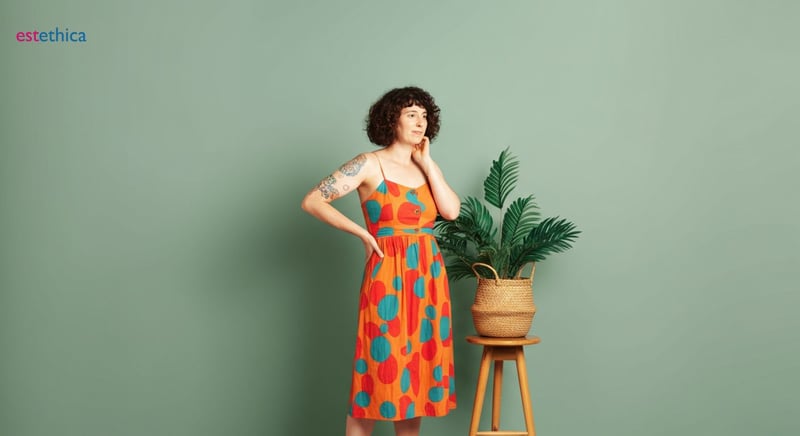Discover Sustainable Fashion: Eco-Friendly Choices
Explore the vibrant world of sustainable fashion and uncover eco-friendly clothing brands that match your values. Start making greener choices now!
In recent years, sustainable fashion has transitioned from a niche market to a driving trend within the global fashion industry. As awareness about the environmental impact of fast fashion grows, consumers increasingly seek out eco-friendly clothing options. By choosing sustainable fashion, we not only support ethical practices but also contribute to a healthier planet. This guide aims to illuminate the world of sustainable fashion, offering insights into how we can make conscious purchasing decisions that align with our environmental values.
Understanding Sustainable Fashion: A Beginner's Guide
Exploring the Lifecycle of a Garment
Sustainable fashion begins with understanding the lifecycle of a garment, from raw material sourcing to disposal. This approach emphasizes the importance of eco-friendly clothing by using materials like organic cotton, which requires less water and no pesticides. For instance, a single organic cotton t-shirt saves approximately 2,700 liters of water compared to conventional cotton. Additionally, ethical fashion brands prioritize fair trade apparel, ensuring workers receive fair wages and safe working conditions.
Key Elements of Sustainable Fashion
- Eco-friendly materials: Organic clothing reduces environmental impact.
- Ethical labor practices: Fair trade apparel supports worker rights.
- Innovative recycling techniques: Upcycled clothing minimizes waste.
These elements contribute to a more sustainable industry, promoting green fashion and reducing the carbon footprint of clothing production.
Steps to Embrace Sustainable Fashion
- Research ethical fashion brands to support responsible practices.
- Choose eco-friendly clothing options for a reduced environmental impact.
- Participate in circular fashion by recycling or donating old garments.
By following these steps, individuals can contribute to a more sustainable future. For more insights on health safety in fashion, explore estethica's approach to health safety.

Top Eco-Friendly Clothing Brands to Explore
Innovative Approaches to Sustainable Fashion
Brands like Patagonia, Eileen Fisher, and Stella McCartney are at the forefront of sustainable fashion, each bringing unique innovations to the industry. Patagonia, for instance, is renowned for its commitment to circular fashion, encouraging customers to recycle and repair garments. Eileen Fisher focuses on organic clothing, using natural dyes and sustainable materials to minimize environmental impact. Stella McCartney, a pioneer in ethical fashion brands, emphasizes cruelty-free practices and innovative materials like vegan leather. These brands exemplify how aesthetics and sustainability can coexist, offering stylish options that align with personal values.
Key Features of Leading Eco-Friendly Brands
- Patagonia: Circular fashion initiatives and repair programs.
- Eileen Fisher: Organic clothing with natural dyes.
- Stella McCartney: Vegan leather and cruelty-free practices.
Exploring these brands allows consumers to support eco-friendly clothing while enjoying high-quality, stylish apparel. By choosing such brands, individuals contribute to a more sustainable future, aligning their wardrobe choices with their environmental ethics.
Steps to Discover Eco-Friendly Clothing Brands
- Research brands known for sustainable practices and innovations.
- Evaluate the materials and production methods used by these brands.
- Support brands that align with your personal and environmental values.
By following these steps, consumers can make informed decisions that support ethical fashion brands and promote a greener planet. This approach not only enhances personal aesthetics but also contributes to a broader movement towards sustainability in the fashion industry.

How to Identify Ethical Fashion Brands
Key Indicators of Ethical Fashion
Identifying ethical fashion brands involves recognizing specific indicators that reflect their commitment to sustainability and fair practices. Certifications such as GOTS (Global Organic Textile Standard) and Fair Trade labels are crucial markers. These certifications ensure that the brand adheres to high environmental and social standards, from organic clothing production to fair labor practices.
Essential Features of Ethical Fashion Brands
- Transparency: Brands openly share their sourcing and production processes.
- Labor Practices: Commitment to fair wages and safe working conditions.
- Sustainable Initiatives: Participation in programs that reduce environmental impact.
These features not only highlight a brand's ethical stance but also align with the growing consumer demand for sustainable fashion. By choosing brands that prioritize these aspects, consumers can support a more ethical and eco-friendly clothing industry.
Steps to Evaluate Ethical Fashion Brands
- Research certifications like GOTS and Fair Trade for credibility.
- Investigate the brand's transparency regarding labor and sourcing.
- Assess their involvement in sustainable and ethical initiatives.
By following these steps, consumers can make informed decisions that support ethical fashion brands. This approach not only enhances personal aesthetics but also contributes to a broader movement towards sustainability in the fashion industry.

Supporting Green Fashion: Simple Steps to Take
Building a Sustainable Wardrobe
Creating a sustainable wardrobe begins with intentional choices that prioritize quality over quantity. Opt for eco-friendly clothing made from organic materials, which not only last longer but also reduce environmental impact. For example, investing in a well-crafted organic cotton shirt can replace multiple low-quality items, ultimately reducing waste. Additionally, supporting ethical fashion brands that focus on fair trade apparel ensures that your purchases contribute to better labor practices globally.
Simple Actions to Support Green Fashion
- Choose timeless pieces that transcend seasonal trends.
- Support second-hand shops to extend the life of garments.
- Invest in brands that prioritize sustainability and ethical practices.
These actions not only enhance personal aesthetics but also align with a commitment to sustainability. By making conscious choices, individuals can support the broader movement towards eco-friendly clothing and ethical fashion.
Steps to Transition to a Sustainable Wardrobe
- Assess your current wardrobe and identify items that align with sustainable fashion.
- Gradually replace worn-out items with eco-friendly alternatives.
- Educate yourself on how to find sustainable fashion brands that match your style.
Transitioning to a sustainable wardrobe is a journey that requires patience and dedication. By taking these steps, you can contribute to reducing your carbon footprint and supporting a more ethical fashion industry. This approach not only benefits the environment but also enhances your personal style with thoughtful, quality pieces.
Innovative Approaches to Sustainable Fashion
Building a Sustainable Wardrobe
Frequently Asked Questions
What is sustainable fashion and why is it important?
How can I identify ethical fashion brands?
What are some top eco-friendly clothing brands to explore?
What steps can I take to support green fashion?
How can I transition to a sustainable wardrobe?
Discover the Path to Your Healthiest Self with estethica's Award-Winning Services!
📞 Call Now for a Free Consultation!